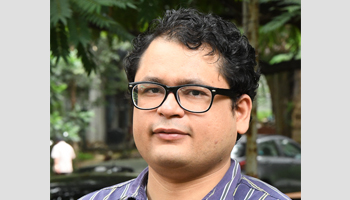
Our research is aimed at understanding new physical properties that emerge in nanoscale matter. Nanostructured materials behave very differently from their bulk counterparts and offer several opportunities and advantages over bulk materials.
Current Interests:
- Quantum Dot Microscopy and Spectroscopy
Quantum dots can serve as single photon emitters that are required for quantum communication and communication. We are interested in developing quantum dots optimized to suit specific single photon generation applications.
- Photodetectors
We are interested in developing photodetector devices from solution processed nanomaterials. For example we have shown near infrared photodetector devices developed from I-III-VI2 semiconductors.
- Plasmonic Materials
Metal nanoparticles enable the convenient regulation local photonic density of states. This can in turn alter the properties of nearby emitters. We are interested in emergent phenomena in these materials.
- Two-Dimensional Nanocrystal Assemblies for Photocapacitive Devices Mahadevu T. Pandit, J. J. Samuel, U. Ghosh, B. Jana, H. K. Gupta, N. Aetukuri and A. Pandey ACS Appl. Electron. Mater.2023, 5, 1770.
- Unconventional properties of engineered Au–Ag nanostructures Superconductor Science and Technology Saha et. al. 2022, 35, 084001.
- Tuning radiative lifetimes in semiconductor quantum dots Bhattacharyya, A. Mukherjee, R. Mahadevu; A. Pandey J. Chem. Phys.2021, 154, 074707.
- Copper Iron Sulfide Nanocrystal‐Bulk Silicon Heterojunctions for Broadband Photodetection Sugathan, N. Saigal, G. P. Rajasekar, A. Pandey Advanced Materials Interfaces 2020, 7, 2000056.
- CuFeS2 Quantum Dots and Highly Luminescent CuFeS2 Based Core/Shell Structures: Synthesis, Tunability, and Photophysics Bhattacharyya, A. Pandey Journal of the American Chemical Society 2016, 138, 10207.


